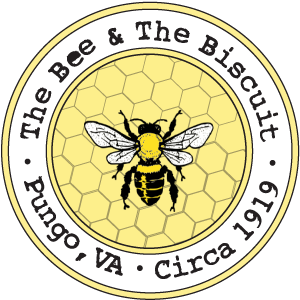History of Downtown Pungo
The Original Burroughs Family Land and New Owners:
Around the turn of the century, from the 1800s to the 1900s, Fred Burroughs was the Commissioner of Revenue in Princess Anne County. He owned all the land on the west side of Princess Anne Road, from the Red Barn to what is now The Bee & The Biscuit. Princess Anne Road was. originally called the Sawdust Road
Fred Burroughs built and once lived in the house that is now called The Sawdust Road coffee shop. Fred was also an assistant headmaster at the Tabernacle School in Pungo, located next to the church. His sister was a student there, along with Joe.
Fred (b.1885) married Malvine. (b. 1898) Burroughs, and their son, Joe Burroughs, was born in the house in 1933 and is still a citizen of Pungo. The Burroughs Family still owns the house, as well as the
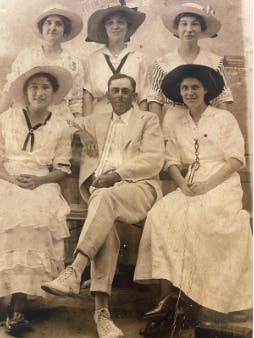
Fred Burroughs c. 1900. The original owner of the land The Bee is built on
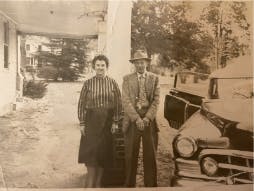
Fred and Malvine Burroughs c. 1935

Downtown Pungo intersection c.1930s

The company that built kit homes house that currently operates as
the Pungo Board House, plus the land that is used for a parking lot behind the houses. Fred Burroughs subdivided his land into five lots, and the lot that is currently the Bee & The Biscuit was purchased and built on in 1919 by Enoch Capps. Enoch Capps was a businessman who was born around 1893 in Creeds. He became a well-to-do businessman in the Pungo area, as a partner in the Land and Capps General Store, which is the large fading building on the corner of Indian River Road and Princess Anne Road.
The Origins of The Bee & The Biscuit
The craftsman style house that is now our restaurant was originally ordered from a catalogue by Enoch Capps in 1918. He purchased it from a Bay City, Michigan house company called Aladdin Homes. Their Aladdin Homes Readi-Cut kit houses were popular during the first half of the 1900s, along with a dozen other companies, including Sears, that also made the kit houses. Sears

Original house in 1919. Built by Enoch Capps
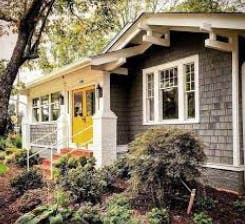
The Bee and the Biscuit now
almost all kit houses that can still be found today around the country. are located near railroad tracks.
Many elements of the current restaurant are original to the building. The exterior brick, the framing, many of the windows, including some of the glass (which can be recognized by its wavy quality), and most of the wooden doors are all original, and over a hundred years old. The fireplace, the wood arch in the bar area, the shelves in the tea room are all original, and the beautiful wood floors throughout the house are all original. The porch area inside the house was once open air and was. later enclosed for additional space. The small white brick pylons that support the building on the outside are original. The larger outside porch area is an add-on, as well as the safety ramp in the rear of the building near the parking lot. Our kitchen was a bedroom, our dish pit was the kitchen and dining area. Our inside bar area was the living room. And the Tea Room was originally a bedroom, with the original closet and door still intact.
The glass door knob that opens our Tea Room door is also original to the house and a cherished artifact
Enoch Capps died young in 1934, and his widow Ola lived in
sold at least 75,000 kit homes during that time. Because the Sears name is recognized, it is usually credited with creating the kit house concept, but it was the two brothers that founded Aladdin Homes that came up with the idea in 1906 after years of marketing pre-cut boat kits. Their homes were well-designed, quality-crafted and solid, which is why our little restaurant house is still functioning so well a century later. Enoch Capps spent $1499.10 purchasing this house kit.
After the house kit was ordered from the catalogue, it was delivered by train in thousands of pre-cut pieces along with a large book of instructions for assembly. The Bee & The Biscuit house was modeled after a Pasadena, California bungalow house entitled the "Plaza". The Norfolk train tracks that used to run right behind The Bee & The Biscuit a century ago were used to deliver the kit house to this very spot. In fact.

Original catalogue description of the house
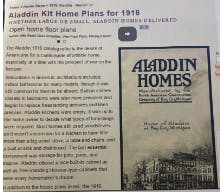
Advertisement for Aladdin Homes
the house till she sold it in the 60s to Jesse Smith.
Enoch Capps, Businessman and Homeowner:
Enoch Capps was born c. 1893 in Creeds, and was a well-to-do businessman who co-owned the large wooden General Store that you can still see at the downtown Pungo intersection of Princess Anne Road and Indian River Road. His business partner was George Land who lived across the street from The Bee & The Biscuit where the empty lot is now. Together they ran the very nice Land & Capps General Store that was actually much more like a department store. They sold everything from the essential to the luxurious in 1909. Animal feed, groceries, clothing They were generous in extending credit to the local farmers, and operated

Check from Land and Capps General Store
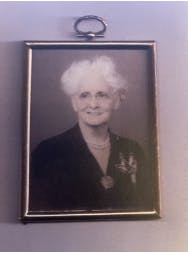
Ola Capps, Enoch's widow
1933 Pungo Post Office located in
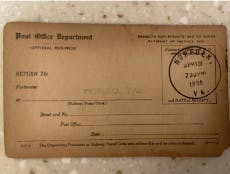
Land and Capps General Store
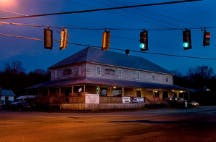
Land and Capp's General Store c. 2008, operating as Muden's. Downtown Pungo's deli and tavern
by a "one payment a year economy. The farmers would make their purchases all year long, and when their crops came in at harvest time, they would pay their bill. It was a mutual high-trust relationship.
The telephone was invented in 1876, and Land and Capps installed telephone lines and the central switchboard in their store, and they also opened the local U.S. Post Office in their store. They sold gasoline after the automobile was invented, and a Ford dealership was established where Pungo Off Road is located now. There was another small grocery store where the Red Barn is now, and a bar called Pallets on the empty corner where the "drunks" hung out.
In WWI they had 200 Navy personnel at the Pungo Airfield, and Mom Burroughs rented out her properties for the women and some married couples who couldn't live in the base barracks. Joe Burroughs had a childhood friend in the Capps house, and remembers having to take cookies over to the family. He also
remembers sleeping in the basement in the summertime with a friend because it was so much cooler than the main house. He recalls that the basement had a number of cats who hung out, and the homeowner had a lot of Indian arrowheads.
Prior to the Johnsons, who are current owners, Wayne Richard, a Cajun French resident of Pungo, lived in the house and operated a French restaurant on the property. He made a deliciously famous carrot soup and also sold pre-made meals for people to take out and serve at home. Some of his small pottery plates are still in use in our tea room.
Letha Whitehurst lived in the "Baby Bee" next door, and was Joe Burrough's grandmother's best friend.

Joe Burroughs (Fred Burroughs son), with his daughter Tammy Burroughs Hindle 2021
